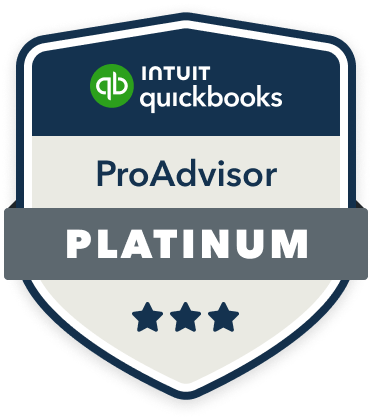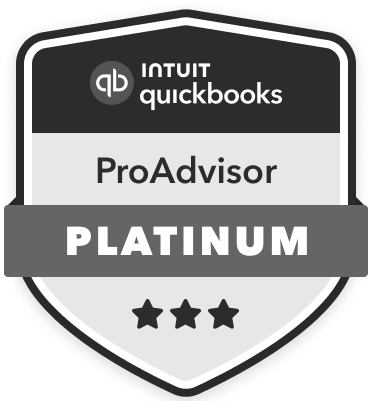If you earn income that doesn’t have taxes withheld automatically (such as self-employment income, rental earnings, or capital gains), you’re usually expected to make estimated quarterly tax payments. These payments help you stay current with the IRS instead of owing a large balance at the end of the year. For freelancers, business owners, and independent contractors, knowing how and when to pay can help prevent penalties and improve cash flow management.
This page not only includes a free online calculator you can use, but also covers how estimated payments are calculated, when they’re due, and how to avoid common mistakes. We’ll also highlight how our calculator can give you a fast estimate and why talking to a CPA can lead to smarter planning. If you want a clearer path forward with your taxes, this is a good place to start.
Free Online Estimated Quarterly Tax Payments Calculator
The free calculator below will help you determine how much you should be paying in estimated quarterly taxes on both the federal and state levels. Simply enter your financial information, and our tool will calculate your estimated payment amounts for you.
Results
IRS Payment
$
State Payment
$
What Are Estimated Quarterly Taxes?
Estimated quarterly taxes are advance payments you make throughout the year to cover your federal tax obligations. They apply when your income isn’t subject to automatic withholding, like a paycheck normally would be. This includes income from self-employment, interest, dividends, rental property, or other sources.
The IRS expects these payments to be made in four equal installments unless your income varies. If you wait until April to pay it all at once, you may be charged interest and penalties, even if you pay in full. Staying current with your estimated payments helps you avoid surprises and reduces the risk of falling behind.
Who Has To Pay Estimated Taxes?
You’re generally required to pay estimated taxes if you expect to owe $1,000 or more when your return is filed. That amount refers to what you owe after subtracting any withholding or refundable credits. If you're self-employed or run a small business, this usually applies to you.
Estimated tax rules also apply to partners, S corporation shareholders, and independent contractors. Even if you have a W-2 job, income from side gigs or investments may trigger a need to pay quarterly. If you’re unsure whether you need to pay, reviewing last year’s return and your current income sources is a good place to begin.
When Are Estimated Payments Due?
The IRS divides the tax year into four payment periods, each with its own deadline. These deadlines are typically April 15, June 15, September 15, and January 15 of the following year. Each payment should reflect the income earned during the related period.
If a due date falls on a weekend or holiday, the deadline moves to the next business day. Missing a due date, even by a few days, can result in penalties and interest, but keeping a tax calendar and setting reminders can help you stay on track and avoid late fees.
How Estimated Payments Are Calculated
There are two primary ways to calculate estimated tax payments: the safe harbor method and the annualized income method.
- The safe harbor method protects you from penalties if you pay either 90% of your current year’s tax bill or 100% of your prior year’s liability (110% if your income was over $150,000). This approach is easier for many people because it uses numbers that you’ve already calculated.
- The annualized income method adjusts payments based on your income as you earn it. This is helpful for those who either have seasonal income or experience large swings throughout the year. It involves more tracking, but can better reflect your financial situation as the year progresses.
How to Avoid IRS Penalties
To avoid IRS penalties, many taxpayers rely on the safe harbor method. This means paying at least 100% of last year’s tax bill or 90% of what you’ll owe this year. This method works best when your income is relatively stable from year to year.
You can also reduce penalties by tracking your income quarterly and paying based on what you’ve earned so far. This requires good bookkeeping, but it gives a more accurate view of your tax position. If your income fluctuates, this can prevent you from overpaying or falling short.
What Happens If You Miss a Payment?
If you miss a quarterly payment, the IRS may charge penalties and interest. These charges apply even if you eventually pay your full tax bill on time in April. The longer you wait, the more those penalties can grow.
In some cases, the IRS may waive penalties for a valid reason, such as illness or a natural disaster. However, this isn’t automatic. You’ll need to request relief and provide supporting documentation, which a CPA can help you prepare.
Don’t Forget About State Payments!
In addition to federal taxes, many states require estimated payments, too. These rules vary and may apply even if you work remotely or have income across multiple states. Missing state deadlines can lead to additional penalties, and state calculators aren’t always easy to find.
Some states follow the federal deadlines, while others have different due dates and income thresholds. If you earn money in more than one state, figuring out your estimated taxes gets even more complicated. A CPA can help you sort through the rules and file with the correct agencies.
Benefits of Staying Current With Your Payments
Paying quarterly taxes on time can reduce stress at tax season and help with financial planning. You won’t face a large tax bill in April, and you’ll avoid penalties that can eat into your savings. Consistent payments also make it easier to track cash flow and plan ahead.
Staying current also keeps you in good standing with the IRS. If you need to apply for a loan, set up an installment agreement, or make changes to your return, having a clean record helps. It shows that you’re managing your responsibilities and taking your finances seriously.
Our estimated tax calculator is a helpful starting point, especially if you’re unsure how much to pay. It gives a rough estimate based on what you enter and updates your expected payments across the four deadlines. This can help you stay organized and avoid last-minute stress. But once your income grows or your situation changes, it’s worth speaking to a CPA. They can go beyond the estimate and help you adjust for real-life shifts that an online tool can’t see. That way, you can make informed decisions that reflect your business and personal goals.
How Estimated Taxes Affect Retirement Contributions and Planning
Estimated taxes and retirement contributions often go hand in hand, especially for self-employed individuals. When you contribute to a retirement account like a SEP IRA or Solo 401(k), you reduce your taxable income for the year. That means your estimated payments may need to be adjusted once those contributions are factored in.
Planning your contributions early helps you avoid overpaying. For example, if you set aside 25% of your income for taxes but later contribute a large amount to retirement, your tax liability may drop below your estimated payments. A CPA can help you time your contributions so you benefit from the deduction while still meeting IRS requirements.
It’s also important to consider contribution limits and timing. Some retirement accounts require deposits by year-end, while others allow contributions up to the tax filing deadline. Knowing how these timelines affect your quarterly payments can make a big difference in how you manage cash flow.
Examples of Quarterly Tax Payment Scenarios
Let’s say you're a freelance designer earning $80,000 per year. You take the standard deduction and pay self-employment tax. Using the safe harbor rule, you estimate your total tax liability at around $16,000 and divide it into four payments of $4,000 due each quarter.
Now imagine you're a day trader earning $120,000 in capital gains, but only during certain months. Using the annualized income method, you could pay less in quarters where you had no trading activity. This method adjusts to match income earned during each period rather than assuming it's consistent throughout the year.
For business owners running an LLC taxed as an S corp, you might receive a reasonable salary with taxes withheld while also earning distributions. Your salary withholding may cover part of your liability, but estimated payments may still be required on the remaining income. These examples show how the method you choose affects both payment size and timing.
Common Tax Credits and Deductions That Influence Estimated Payments
Tax credits and deductions can lower the amount you owe each quarter. Common deductions include business expenses like software, equipment, mileage, and home office use. These reduce your taxable income and should be factored into your estimated payment calculations.
Credits, on the other hand, lower your actual tax liability. The Child Tax Credit, American Opportunity Credit, and energy efficiency credits can reduce how much you pay. If you're eligible for any of these, your quarterly payments may be lower than what a calculator without those inputs would suggest.
It’s important to review credits and deductions each quarter if your situation changes. For example, buying a qualifying vehicle or installing solar panels may affect your tax bill later in the year. Keeping good records and updating your estimates regularly helps prevent overpayments and penalties.
How Estimated Taxes Work for Dual-Income Households or LLCs
In dual-income households, one spouse may have taxes withheld through a W-2 job while the other earns self-employment or investment income. In these cases, the household must still meet the IRS’s payment threshold, even if one person has sufficient withholding. Estimated payments are calculated based on combined income, which can lead to confusion without careful planning.
A common solution is to increase withholding through the W-2 job to offset the other income. This can sometimes eliminate the need for separate estimated payments if the total taxes withheld meet the required threshold. However, this approach doesn’t work for every couple and should be reviewed regularly.
For LLCs, tax treatment depends on how the business is structured. A single-member LLC is typically treated as a sole proprietorship, and the owner is responsible for estimated payments on all profits. Multi-member LLCs pass income through to the partners, each of whom is responsible for paying estimated taxes on their share. A CPA can help you understand what applies to your situation and make adjustments throughout the year.
What the USA Tax Gurus Calculator Can Help You Do
Our calculator estimates your quarterly tax payments based on your projected income and deductions. You’ll enter details like your expected total income, business expenses, and tax credits to get a quick estimate. It’s intended to help freelancers, contractors, and small business owners understand their upcoming tax obligations.
The calculator can also show you how your payments will change depending on income changes throughout the year. It’s especially helpful for comparing the safe harbor method with the annualized income method. While the tool can give you fast numbers, it isn’t a substitute for tailored advice from a tax professional.
Why Calculators Aren’t Always Enough
While convenient, tax payment calculators are relatively simple. They only use basic formulas and can’t interpret the details of your financial picture. They also don’t consider recent tax law changes, state requirements, or how different types of income are taxed, which means you might get an estimate that misses key deductions or credits.
A calculator also doesn’t offer judgment or context. It can’t tell you if you should change your business structure, adjust your withholding, or modify your retirement contributions. When your income changes or your deductions vary, the risk of underpaying grows.
The Value of Working With a Chartered Professional Accountant (CPA)
When you work with a Chartered Professional Accountant (CPA), you’ll get more than basic calculations. They’ll ask about your income sources, business activity, and upcoming personal and business changes to help you make better decisions.
Here’s what a CPA can do:
- Adjust quarterly amounts as your income changes. If your income goes up or down, a CPA can update your numbers so you're not paying too much or too little.
- Apply deductions correctly. Business purchases, home office costs, and retirement contributions all affect your totals. A CPA helps sort those out.
- Keep up with tax rule changes. When deductions, credits, or filing requirements shift, a CPA can explain how they apply to you.
- Manage tax payments across multiple states or countries. If you earn money in more than one place, they’ll help you pay what’s required without confusion.
- Handle IRS notices or corrections. If you receive a letter from the IRS or need to fix a return, a CPA can take care of the paperwork and reply on your behalf.
- Coordinate estimated taxes with other payments. They can time your payments around payroll, sales tax, or other filing needs to avoid surprises.
When your income comes from different sources or shifts during the year, staying current on your taxes takes planning. A CPA can walk through your numbers with you, make timely changes, and help you stay ahead of problems.
Questions? Reach Out to an Experienced CPA Today!
Quarterly tax payments are a fact of life for many Americans, especially those with non-W-2 income. While they might seem like a chore, they’re manageable with the right tools and good advice. A calculator can give you a quick answer, but it’s only one part of a bigger picture. At USA Tax Gurus, we help you stay current with your quarterly tax obligations. If you’re ready to take control of your tax planning, contact us today by filling out an online contact form or by calling 213-204-8737. We’ll walk through your income, answer your questions, and help you build a strategy that works.









